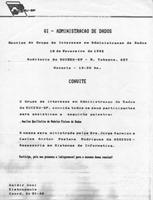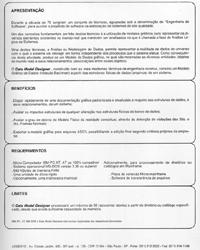On the road
After registering the brand and developing appropriate marketing material, I began to offer Data Model Designer to my consultancy customers. All of them bought at once, at US$ 3,300 apiece.
Most people were impressed, and found the price rather acceptable.
From the very first moment, I realized that I could not attack CASE tools. Since they were still rare, lots of people were considering them, and it was pretty impossible to compete with giants like Excelerator or Bachman. I positioned the product as a complement to CASE tools, and even if you didn't have a CASE tool, you could use it due to its reverse engineeering capabilities (a feature most CASE tools did not have at the time).
In October, 1991, I published a couple of ads in Datamation, the leading Brazilian computer magazine (click on the ad to magnify it), toda published as Computerworld. Obviously, at the time, mainframe oriented, and a perfect vehicle to reach my audience. Back then, the same concepts you see ten years after in ERwin Examiner were there: improve performance, detect errors that could lead to integrity problems, detect redundancies, and so on.
What was needed to run DMD? "A XT, AT ou 386 PC, with MS-DOS V3.2 or greater, CGA, EGA ou VGA graphics card, 649Kb of RAM, 51/4 drive, pin printer, Micro Mainframe connection, and IBM'S QMF". But what is Theseus? A local CASE tool, developed at the city of Campinas by an Italian guy I met at Alpargatas, one of my customers, who wanted me to develop an interface with his tool.

But as almost all the companies I visited had some case of CASE tool (they were big companies, with few financial restrictions) I began to realize I needed some kind of interface with the existing tools. But all were incompatible, and to access their catalog or repository was out of question. Since every tool had some kind of function to transform the Logical Data Model into a schema, I developed a primitive SQL parser to read SQL statements. That really helped, since if the prospect asked: "What about the models I have in my CASE tool but not in my physical DB?" I had an answer on the tip of my tongue.
Back then the concept of quality was ignored. But as early as 1992 I began to lecture on the importance of quality assurance at the physical DB level. I caught the attention of SUCESU - SP (the society of computing users of São Paulo) who gave me the opportunity to lecture on the subject (click on the image to view the invitation). Obviously, I addressed the point, and ended with "Meet Data Model Designer, the only tool that will automate ...".
( ... more to come ..)


